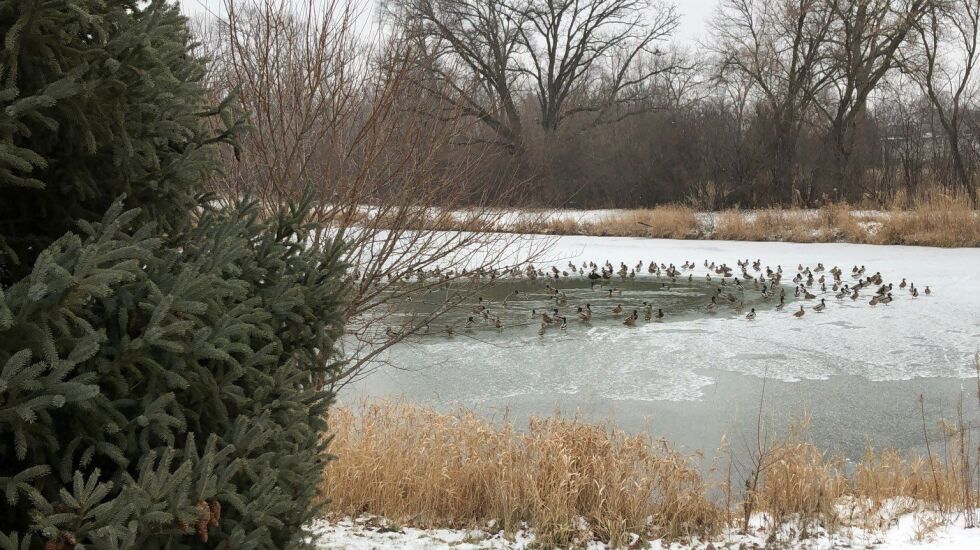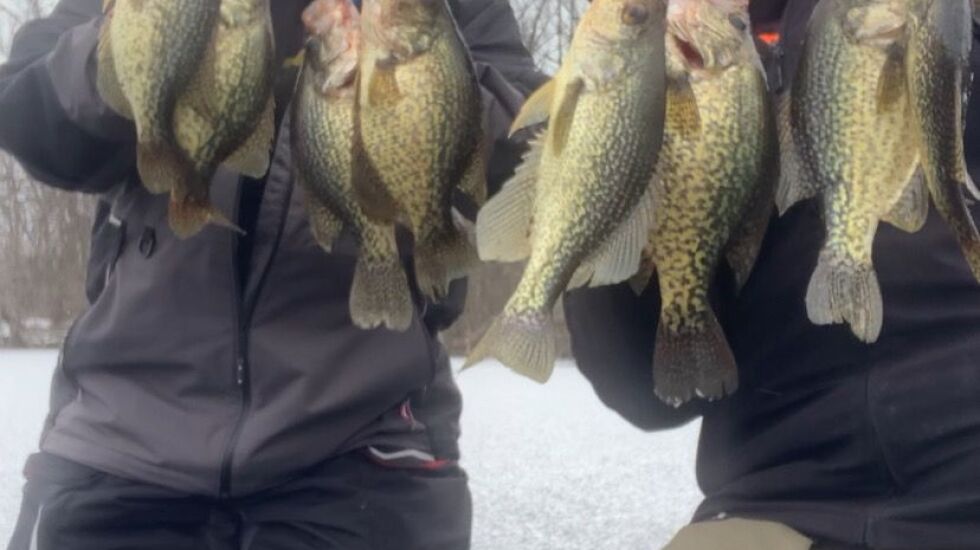
Beavers, waterfowl, springs, deep holes are all things to notice with early ice.
But we shouldn’t freak out.
Every year about now, dire warnings about ice and fishing descend like the temperatures.
Those who enjoy ice should.
Vehicle deaths in the United States reached a 16-year high of 42,915 in 2021, according to the National Highway Traffic Safety Administration, but it doesn’t feel like we are snowed under with same amount of warnings.
By contrast, deaths related to ice fishing are so infrequent that nobody keeps track nationwide.
But any death while ice fishing is heartbreaking, no matter how rare. Accidents while ice fishing are usually preventable.
I reached out to a couple people who consider early ice a gift from above.
“First ice to hard-water anglers is like opening day of deer season to hunters,” emailed Ken “Husker” O’Malley, the last person I ice fished on Jan. 30. “Everyone has their gear ready to go and are anxiously awaiting first ice.”
I fathom that analogy.

He recommends 3-4 inches of ice before going out. Officials recommend 4 inches of good clear ice. You could hold a sumo wrestling match on 4 inches of good clear ice.
That’s the thing about ice, it’s like people. There’s all kinds, from good clear early ice to late season punky ice.
That’s where caution and knowledge come in.
Pete Lamar emailed the photo of geese keeping a hole open on Tuesday, noting, “It’s why I stay off ice if there are waterfowl or beavers around.”
Geese I knew about. I monitored some trying to keep a hole open during the polar vortex of 2013-14, before finally conceding. Shabbona Lake, a top nearby ice-fishing spot, is notorious for geese keeping a hole open even when near-shore areas have half a foot of ice.
But beavers? Hadn’t thought about them.
Know your lake or pond and its critters, springs, deep holes, current areas and inflows.
O’Malley gave this list for going out: spud bar, ice picks, ice cleats, throw rope, PFD or float suit, extra set of dry clothes, waterproof box for your cell phone, and a partner. “Never do this by yourself.”
On first ice, he recommended using a spud bar every couple feet and an auger to check ice thickness every 5 feet or so.
“Ice can be 4 inches where you stand but only be an inch or two just feet in front of you,” he said. “Learn to read signs of bad ice. Clear ice is better than cloudy ice or honeycomb ice. Underwater springs will have circles with spiderwebbing. These areas have current and warmer water. They are great areas to fish but can be dangerous.”
Dan Coleman, who works at Angler’s International Resources in Palatine, hears stories of anglers going in.
From his experience (and so far never having gone in), he gave these five main points for first ice: 1. Buddy system. 2. Spud the ice. “Two-three solid hits on the ice for it to be walkable. One hit and through, turn around.” 3. Cleats. “While that first black clear ice can be really strong to walk on, it’s best you don’t test its strength with your falling body weight or the back of your head.” 4. Ice picks. “You should always have them on your person around your neck when going out.” 5. Trust your instincts. “Water buildup on top of the ice or coming out of holes in an upward manner is never a good sign. Time to leave!”
I like “trust your instincts.” That’s good life advice, too.








